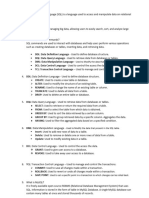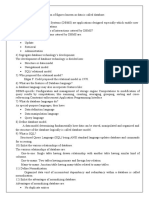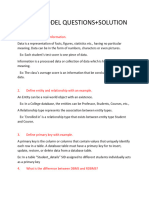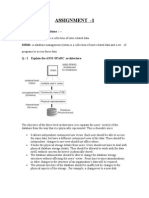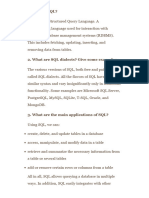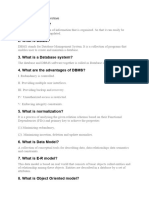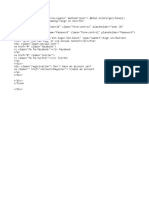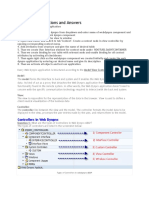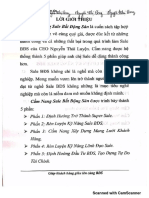0% found this document useful (0 votes)
75 views3 pagesAssignment Part One
A database management system (DBMS) is software that manages data and provides access to applications. A relational database management system (RDBMS) is a DBMS designed for relational databases that store data in rows and columns. Structured Query Language (SQL) is used to manage data in an RDBMS. Constraints and data integrity rules ensure data accuracy by limiting what values can be inserted or updated. Database testing verifies that applications accurately retrieve, store, and modify data in the database.
Uploaded by
Monira Mohamed YousufCopyright
© © All Rights Reserved
We take content rights seriously. If you suspect this is your content, claim it here.
Available Formats
Download as PDF, TXT or read online on Scribd
0% found this document useful (0 votes)
75 views3 pagesAssignment Part One
A database management system (DBMS) is software that manages data and provides access to applications. A relational database management system (RDBMS) is a DBMS designed for relational databases that store data in rows and columns. Structured Query Language (SQL) is used to manage data in an RDBMS. Constraints and data integrity rules ensure data accuracy by limiting what values can be inserted or updated. Database testing verifies that applications accurately retrieve, store, and modify data in the database.
Uploaded by
Monira Mohamed YousufCopyright
© © All Rights Reserved
We take content rights seriously. If you suspect this is your content, claim it here.
Available Formats
Download as PDF, TXT or read online on Scribd
/ 3


